Expanding My Whiskey Horizons
Whiskey comes in many forms (Tennessee, Bourbon, Scotch, Irish, etc.) and comes from many places. I am an enjoyer of whiskey, but it was not until glancing at the side of a Maker's Mark bottle that I considered visiting a whiskey distillery. On the side of any Maker's Mark bottle is an invitation to visit their distillery, which is also a National Historic Landmark, in Kentucky. Although a few years elapsed between the time I saw the invitation displayed on the side of the Maker's Mark bottle and when I actually visited the distillery, I finally made the visit as part of a side trip to California from Florida in 2010.
Maker's Mark Bourbon
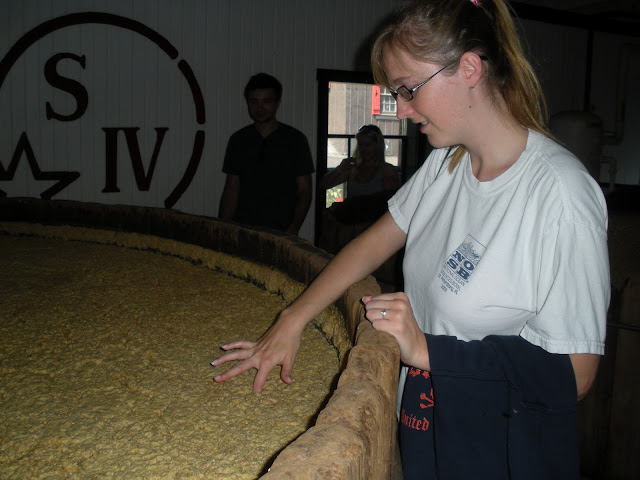 |
| Tasting Maker's Mark in process somewhere between the "mash" and "wort" stages. Guests can taste the liquid at different stages to taste how the mixture evolves with time. |
Visiting the Maker's Mark Distillery became the distillery tour against which I have measured all others. Not only was the tour free, but it included a tour guided by a real person that included all parts of the whiskey making process, including tasting different stages of the whiskey making process, ending with a taste test of the final product. Maker's Mark bottles are distinguished in the store by wax that envelopes the lid and neck of the bottle. The company boasts that every bottle is hand-dipped in wax to give the bottle a unique look. Sure enough as part of the tour at Maker's Mark guests can see where workers pull bottles from the assembly line and dip them into a container of wax. Bottles with wax not up to appearance standards are pulled from the line, the wax removed, and re-dipped in the vat of wax. In the gift shop, at the end of the tour where the taste test also occurs, guests can purchase a bottle of Maker's Mark sans the wax, which they can dip themselves as a memento.
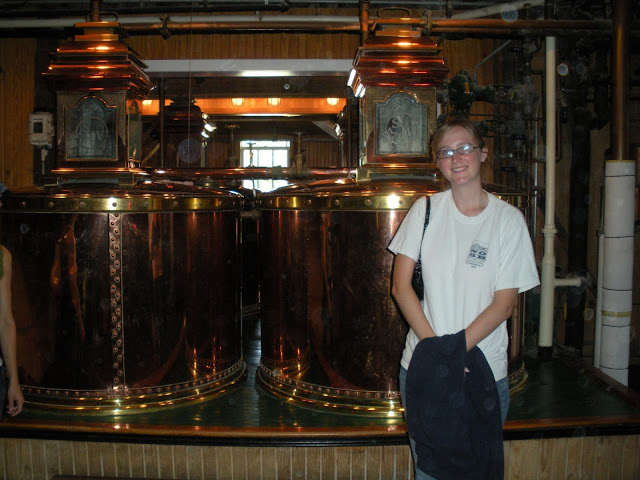 |
| Smiling in front of the two stills at Marker's Mark. Alcohol yet to be aged pours from pipes into the glass boxes at the top and down into the brass containers below. |
We did not purchase a dip your own bottle of bourbon, because the price was rather inflated. However, we did purchase a bottle of Maker's 46. Marker's Mark only makes two bourbons, Maker's Mark and Maker's 46, which has a smoother taste due to extra panels of charred wood used in the agin process. The first time we saw Maker's 46 was in the tasting room/gift shop, although it is now widely available. Visiting the Maker's Mark Distillery was an overwhelmingly enjoyable experience, although I will note we visited in summer and it was quite hot especially in the mash house and distillery. I think all the visitors on our tour left a bit sweatier than when they arrived.
Jameson Irish Whiskey
Unlike the Maker's Mark distillery in Kentucky, the Jameson distillery in Dublin, Ireland is not an active distillery, but is now purely a visitor's experience situated in the location of the original distillery. It is aptly named the Old Jameson Distillery. We visited the Old Jameson Distillery after a morning spent at the
Saint James Gate Brewery (the home of Guinness). The Jameson Distillery consists of an interactive guided tour through the history of John Jameson and his invention of triple distilled Irish whiskey. Irish whiskey generally has a cleaner taste to it than its bourbon and scotch counterparts, and it therein a favorite of many for cocktails.
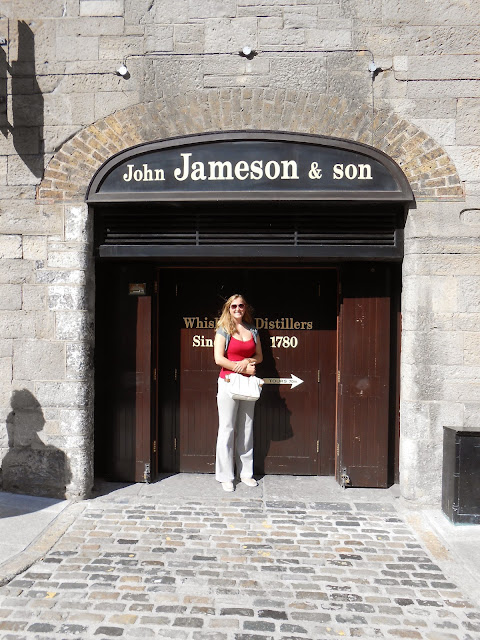 |
| Standing in front of the old Jameson Distillery where tours are held in Dublin, Ireland |
After our tour of the Old Jameson Distillery and the Irish whiskey making process. We were ushered into a room where batons were handed out randomly to six guests. I was one of the lucky baton holders, who received a complimentary comparison taste test of scotch (Johnny Walker), Tennessee whiskey (Jack Daniels), and Jameson Irish Whiskey. The clean taste of Jameson was apparent when paired against the other whiskeys, but as a person who likes flavorful whiskeys I could not say it was my favorite. All adults on the tour were then treated to an Irish whiskey cocktail of their choice before heading to the gift shop. Also unlike the Maker's Mark tour, the tour of the Old Jameson Distillery costs 15 eruos.
Talisker Scotch Whiskey
My absolute favorite whiskey in the world is Talisker Scotch Whisky. The Talisker Distillery (and tour) is located on the Isle of Skye in Northern Scotland. The Talisker Distillery offers tours of their active distillery on the Isle of Skye at a cost of 8 pounds, which of course includes a sampling of their best selling scotch. As the Isle of Skye is a bit more remote than the Jameson or Maker's Mark Distilleries, our tour group at Talisker was markedly smaller than at the other distilleries.
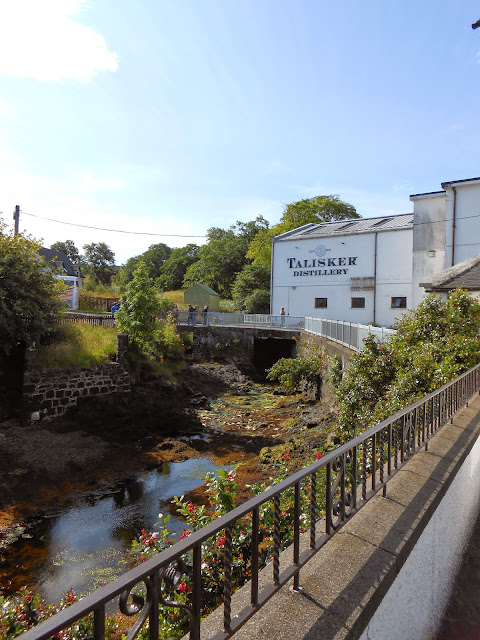 |
| Outside the Talisker Distillery on the Isle of Skye in Scotland |
One thing I remember vividly about the Talisker Disterlly was the strong smell of fresh-baked bread that enveloped the entire area. Of course the smell of bread is typical in any food or drink operation that utilizes yeast, but never have I experienced such a potent form of that smell. Even now years later when I smell bread baking I am reminded of my trip to the Talisker Distillery. The Talisker tour featured equipment in use accompanied by explanations from our tour guide, although we were unable to taste anything but the final product. Talisker scotch is on the highland to island spectrum of single malt scotch, giving it a hearty peaty flavor, and it comes with a hearty price tag to match, which is further inflated at the small gift shop of the distillery. Oddly enough the place I have found Talisker the cheapest was in Sint Marteen in the Caribbean. Overall the Talisker Distillery offers a nice excursion on the rather subdued Isle of Skye.
Jim Beam Bourbon
As with most other bourbon distilleries in the world, the Jim Beam Distillery is located in Kentucky, right down the road from the Maker's Mark Distillery. The collection of bourbon distilleries (including Maker's Mark, Jim Beam, Wild Turkey, and a few more) in Kentucky are known collectively as the Kentucky Bourbon Trail. Visitors can pick up a bourbon passport at any of the participating distilleries or visitor centers. Those who complete their bourbon passports can exchange them for a Kentucky Bourbon Trail t-shirt. I've only visited the Jim Beam and Maker's Mark Distilleries of the bourbon trail, but I would like to revisits Kentucky some day to finish the trail and receive my free t-shirt.
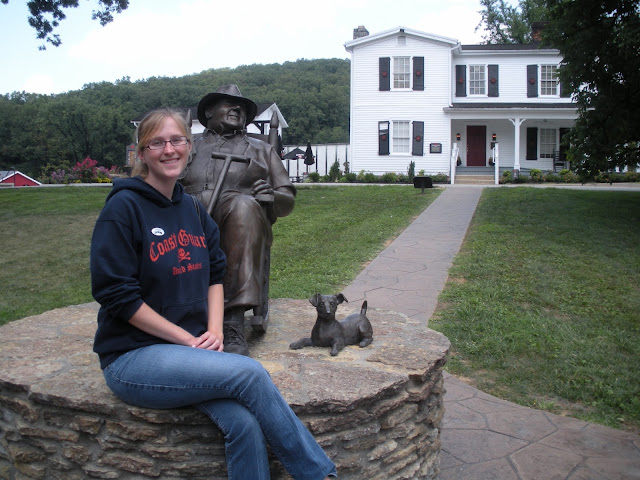 |
| Sitting out front of the historical home and museum of the Jim Beam Distillery. |
When I visited the Jim Beam Distillery a few years ago the visitor experience was limited to a few historical buildings that contained exhibits about the Beam family, and as always a complimentary tasting. Unlike the other distilleries, the Jim Beam complimentary tasting was quite extensive featuring an entire flight of bourbons including a taste of Booker's Small Batch Bourbon. Under construction during my visit was a much needed extension to the tour which would include more of the production process. Jim Beam is a larger scale bourbon operation, and the grounds reflect that with ugly warehouses littering the area. No doubt, additions to the tour will make the experience more homey and less industrial.
The Scotch Whiskey Experience
The last whiskey related stop on this list is not a distillery but an experience: The Scotch Whiskey Experience in Edinburg, Scotland to be exact. This tourist trap which is located directly outside the Edinburg Castle on the royal mile, gives an introduction and over view of the scotch making process and types.
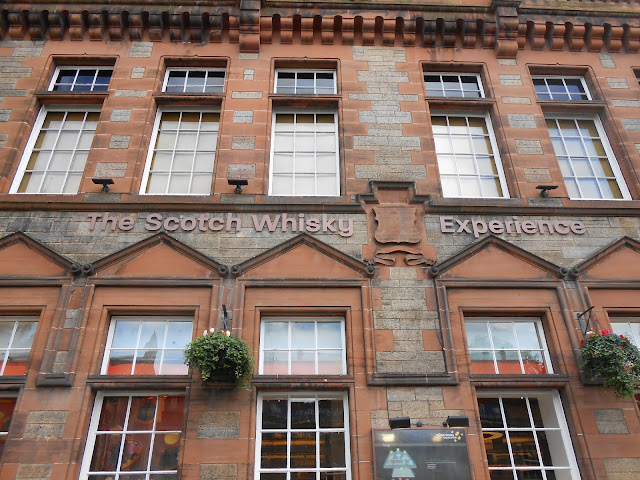 |
| Outside the Scotch Whiskey Experience on the Royal Mile in Edinburg, Scotland |
The experience begins with a carnival-like ride inside a barrel, featuring a narrated explanation of how scotch is made and how this process differs from other whiskeys (such as the use of peat to malt the barely giving scotch a smokey taste). After the ride conclusion, visitors are taken in groups to a tasting room where a tour guide explains the different scotch types and how they correlate to locations in Scotland. Scratch and sniff cards are provided to assist visitors in determining which types of scotch best suit their palate. Lowland scotch (sourced from the southern half of Scotland) generally has the mildest smokey flavor, with highland scotch (from the northern half of Scotland) holding a medium level of smokey flavor. Speyside scotch from Spey River (such as the ever famous Glenfiddich and Glenlivet) area in highland Scotland has a sweat and mildly fruity flavor. Islay, the last of main geographically defined Scotch (from the Island of Islay) has a heavy smoky flavor my boyfriend referred to as a BBQ taste (not meat from a BBQ, but the BBQ itself). Campbeltown and Island scotches represent two more geographically define scotch types, but these scotches are much less common than the others. Blended scotch (such as Johnny Walker) is also given a salute in the this part of the tour. After a tasting of the scotch types of their choice, visitors are shown the world's largest scotch collection and then ushered into the bar area and gift shop.
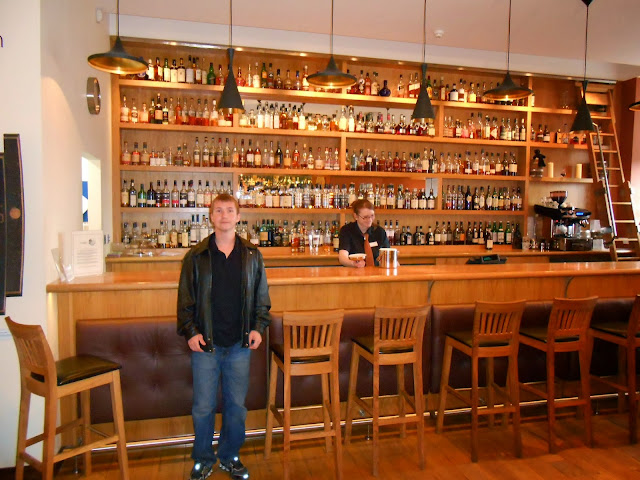 |
| The extensive scotch-only bar adjacent to the gift shop in the Scotch Whiskey Experience |
We stayed awhile in the bar tasting scotches difficult to find back home. One I especially remember was a copy of the Shakelton's scotch, which was produced in a very limited batch. Shakelton was an Antarctic explorer who became stranded on the continent. However, some scotch he brought to the ice continent survived the cold and was recently discovered in a shack on Antarctica. A distillery bought a bottle and reproduced it. The scotch was produced in very limited quantities, and was expensive enough we did not want to splurge for an entire bottle. Fortunately the bar at the Scotch Whiskey experience was willing to sell this special scotch by the glass, which was worth every penny.







No comments:
Post a Comment